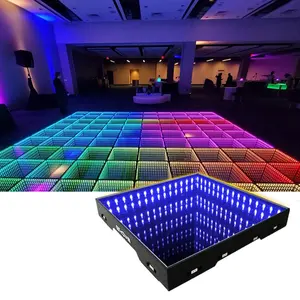Dancing is a popular pastime that unites people together, regardless of at a gathering, a dance venue, or a unique event. However, although dancing can be a lot of enjoyment, it is essential to maintain safety in mind. The dance floor can pose various risks that may lead to injuries or incidents if not managed properly. By recognizing and mitigating these frequent hazards, event organizers and dancers can ensure a secure and enjoyable experience for everyone.
One of the major notable hazards on the dance floor is the risk of slipping or falling. This can happen due to liquid accidents, uneven surfaces, or crowded spaces. To prevent these incidents, it is important to maintain a tidy and clear dance space. Event organizers should regularly check the floor for any spills or obstacles and remove them up right away. Furthermore, making sure that the dance area is adequately lit can help dancers see potential hazards, reducing the chances of slipping. Dancers should also be cognizant of their environment, avoiding crowded areas where they may be pushed or stumbled.

Another common problem on the dance floor is the possibility for injuries caused by overcrowding. When too many people gather in one area, it can lead to bumps, contusions, and even more serious injuries. To avoid Related Site overcrowding, venues should set a maximum capacity for the dance floor and monitor it closely. Event organizers can use fencing or ropes to create specific areas for dancing, which can help manage crowd flow. Additionally, motivating dancers to be aware of their space and to consider others can create a safer environment for all.
Injuries can also happen from improper footwear. Using shoes that are not appropriate dance floor rental for promotional events for dancing can lead to slips, accidents, or foot damages. Dancers should select footwear that provides adequate support and traction. Event coordinators can prompt guests to wear appropriate shoes by adding this information in announcements or communications. Providing a location for dancers to keep their shoes can also help keep the dance floor safe and clear from potential hazards.
Lastly, it is essential to recognize the importance of health and wellness on the dance area. Staying well-hydrated is crucial, especially during long periods of dancing. Lack of hydration can lead to dizziness, fatigue, and other health issues. Event coordinators should provide hydration stations or invite guests to carry water bottles. Additionally, it is imperative for dancers to pay attention to their bodies and take breaks as needed. By encouraging a healthy environment, everyone can enjoy dancing while reducing the threat of health-related issues.
In conclusion, guaranteeing security and enjoyment on the dance floor requires consciousness and preemptive measures. By recognizing hazards such as slips, overcrowding, unsuitable footwear, and health concerns, event coordinators and dancers can collaborate together to create a safe environment. Implementing these actions not only prevents accidents but also improves the overall encounter for everyone involved. With proper precautions, the dance floor can remain a space of fun and community for all.
Comments on “Ensuring Protection and Enjoyment on the Dancing Floor: Recognizing and Reducing Common Risks”